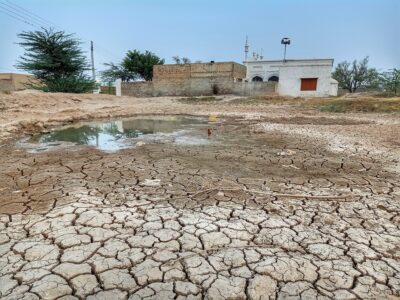
Before the COVID-19 pandemic, the United Nations Sustainable Development Goals set an ambitious goal — to end hunger by 2030.
But, as the pandemic plunged the global economy into the worst recession since World War II, the World Bank reported that COVID-19 is estimated to push 150 million people around the world into extreme poverty by 2021. Hunger is rising in many regions, and the effects may be long-term.
“The poverty effects of COVID-19 are projected to continue for decades or even up to 2050,” said Cynthia Rosenzweig, a senior research scientist at the NASA Goddard Institute for Space Studies and an adjunct senior research scientist at the Earth Institute.
Rosenzweig and other researchers spoke about the pandemic and its implications for the world food supply during an online roundtable at the fall meeting of the American Geophysical Union on December 14.

How the food system and COVID-19 interact is a two-way street, Rosenzweig explained during the roundtable. COVID-19 is a zoonotic disease that may have jumped from animals to humans at a seafood/wet food market in China. The underlying cause of the pandemic has been attributed to agricultural activities encroaching into natural habitats. Now the pandemic is encroaching on agricultural production.
Rosenzweig and her colleagues are currently conducting a study to learn about the effects of COVID-19 on the food systems in three countries in Africa — Senegal, Ghana, and Zimbabwe. They conducted surveys with stakeholders, government officials, and agricultural planners who have been working on the front lines.
“The loss of income is so important to the people that aren’t able to buy food,” said Rosenzweig. “Then, the knock-on effect is that the producers are not able to sell food either. This is basically a downward spiral in many countries in the world, particularly in the vulnerable and lower-income, developing countries. It’s going to take a long time for them to recover.”
All of this is happening simultaneously along with the impacts of climate change on food security that had already been occurring before the pandemic. This includes an increase in temperatures, changes in precipitation patterns, and the increased frequency of extreme weather events.
Zimbabwe is one of 13 countries in southern Africa where it is estimated that around 45 million people are food insecure due to the impacts of the coronavirus, drought, and floods. “The impacts of a COVID-19 are intertwined with preparing for climate change, as we’ve seen in southern Africa, happening simultaneously. Climate change is already affecting food security,” explained Rosenzweig.
The pandemic could make it more difficult to address the long-term challenges of the changing climate. “There was an overwhelming consensus in our survey that the pandemic has made engagement with stakeholders on climate change difficult, particularly in Ghana and Zimbabwe,” said Rosenzweig.
“Around half of the respondents have said that this planning work has slowed down in Ghana and Zimbabwe, although less in Senegal,” she added.
Michael Puma, director of the Center for Climate Systems Research at the Earth Institute, spoke about his recent study, noting that there have been several events in 2020 that could compound the impact of COVID on the food-supply chain. This includes locust infestations in Africa and parts of the Middle East and South Asia.
The shortage of farm labor, the second wave of COVID-19, and dry weather in Europe and South America could also contribute to supply-chain problems. In their study, Puma and his fellow researchers quantified the impacts of these various threats on world supplies and prices.
They mainly focused on wheat, maize, and rice, as they are known as staple crops that are of high importance for food security. “We combined these scenarios in an agricultural price model to also keep track of which countries or regions might be the most susceptible,” explained Puma.
The researchers modeled a production decline in countries most affected by lockdown effects, locust infestations, export restrictions, drought, and other such factors.
Importantly, they found that a decline in production by itself is not likely to cause significant changes in global food prices or availability. Instead, they found that export restrictions could cause food prices to spike dangerously.
“We need a concerted effort to encourage major exporters against enacting trade restrictions,” said Puma.
He observed that back in April and May, at the beginning of the COVID-19 pandemic, some of the major agricultural producing nations implemented export restrictions due to market uncertainties. Fortunately, those restrictions were removed. However, recently Russia, one of the world’s largest wheat exporters, announced its plan to impose an export tax, beginning in February 2021, in an attempt to reduce high food prices within the country.
At the roundtable, Rosenzweig said that it is very likely there will be temporary food shortages, globally, in a scattered and fragmented way.
Despite all this doom and gloom, there are a few silver linings.
Puma pointed out that things could have been worse. “The positive factor is that if you think back to the food shocks in 2008 and 2011, food reserve levels were actually much lower back then. Food stock levels are much higher today,” he said.
And Rosenzweig added that “In Africa, because of having to be resilient to COVID-19 in their food systems, it has spurred innovative thinking about ways to improve resilience to risks in general.”




COVID-19 is changing the World from the roots. All countries have to become together, but still, there is a line between rich and poor ones.